The Best Volcano Tourist Destinations in the Philippines
Volcano Tourist Destinations in the Philippines
The Philippines, an archipelago of over 7,000 islands, is a treasure trove of geological wonders, with some of the most iconic volcanoes in the world. The country’s unique position along the Pacific Ring of Fire makes it a hotbed for volcanic activity, providing travellers with a range of scenic, challenging, and culturally significant volcanic sites to explore.
Whether you’re a nature lover, thrill-seeker, or simply curious about the mysteries of Earth’s crust, the Philippines offers an array of volcanoes that captivate with their landscapes, vibrant history, and local lore.
From Mayon’s iconic slopes to the remote reaches of Babuyan’s volcanic landscapes, the Philippines’ volcanic destinations promise an unparalleled experience for nature lovers and adventurers alike. Each volcano offers a unique blend of beauty, challenge, and history, making the Philippines a premier destination for volcano tourism.
Let’s take a journey through some of the best volcano destinations that are bound to ignite your wanderlust.

Tips for Volcano Trekkers in the Philippines
When trekking a volcano in the Philippines, preparation and awareness are essential. Begin by checking the latest weather forecasts and volcanic activity reports, as conditions can shift rapidly. Dress in moisture-wicking clothing, sturdy trekking shoes, and a hat to shield from sun and debris. Bring sufficient water, energy-dense snacks, and a basic first-aid kit to stay hydrated and nourished on steep, often challenging paths.
Guides are highly recommended; they are knowledgeable about the terrain, local customs, and any potential hazards. Respecting the environment is key, so avoid littering and leave no trace.
The tropical climate means that sudden rain is common, so pack a waterproof layer and store electronics in dry bags. Lastly, observe all signs and barriers for your safety and heed your guide’s instructions. With the right preparations, a volcano trek in the Philippines can be an unforgettable adventure filled with breathtaking views and rich cultural experiences.
- Check Local Advisories: Many volcanoes in the Philippines are active, so it’s important to consult local authorities or the Philippine Institute of Volcanology and Seismology (PHIVOLCS) for current activity warnings.
- Prepare Physically: Many volcano treks are strenuous and require good physical fitness. Training in advance can make your experience more enjoyable.
- Respect Local Culture and Customs: Many volcanoes hold cultural significance for indigenous communities. Take the time to learn about the local culture and customs and show respect during your visit.
- Bring Essential Gear: Sun protection, hydration packs, snacks, and sturdy hiking shoes are essential for volcano treks in the Philippines, where weather conditions can change quickly.
Volcano Number Explained
A volcano number (VNum) is a unique identifier for volcanoes and volcanic features on Earth. The numbers are used to prevent confusion about the location and name of volcanoes. The Smithsonian Institution’s Global Volcanism Program (GVP) is responsible for assigning VNums to volcanoes in the Volcanoes of the World (VOTW) database.
The format for VNums is six digits long and does not include any non-numeric characters. The numbers are structured in a hierarchical way, with the first two digits identifying the region, the next two identifying the subregion, and the last two or three identifying the individual volcano.
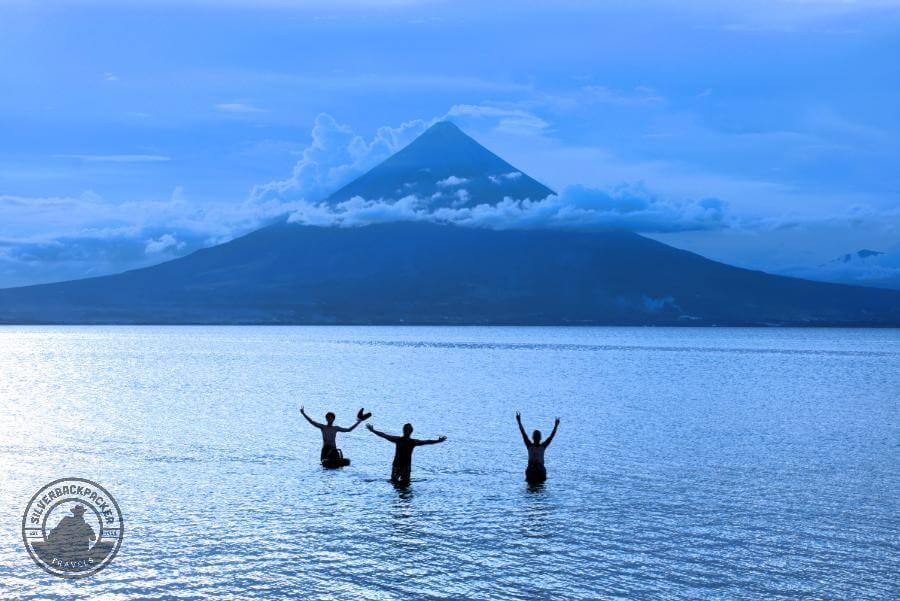
Mayon Volcano – Albay, Bicol Region
Possibly the most famous and most-photographed volcano in the Philippines, Mayon Volcano is renowned for its near-perfect cone shape. Located in Albay province, this 2,463-metre-high stratovolcano stands as a striking figure on the horizon, drawing visitors from all over the globe. Mayon is an active volcano, with numerous eruptions recorded over the centuries, adding to its allure and mystery.
To fully appreciate Mayon’s magnificence, travellers often visit Cagsawa Ruins Park, where the ruins of a centuries-old church tower remain as a stark reminder of the volcano’s powerful past eruptions. Adventurous travellers can also take part in ATV (all-terrain vehicle) tours across the lava trails left by past eruptions, which provide an up-close experience of the volcano’s landscape.
Best Time to Visit: Dry season (December to May) offers clear skies, allowing for unobstructed views.
Mayon Volcano in Numbers
Volcano Number 273030
Last Known Eruption – February 4, 2024
Elevation – 2463m
Coordinates – 13°15′24″N 123°41′06″E / 13.25667°N 123.68500°E

Taal Volcano – Batangas
Taal Volcano, located just 50 kilometres south of Manila, is perhaps the most unique of all Philippine volcanoes due to its setting within a lake. The volcano rises from the centre of Taal Lake, making it one of the world’s smallest active volcanoes. Though Taal may seem compact at just 311 metres above sea level, its scenic appeal and geological significance make it an unforgettable destination.
Visitors can reach Taal by taking a boat ride across the lake from Talisay in Batangas. From there, a hike to the volcano’s crater rewards travellers with a view of the vivid, aquamarine crater lake within the caldera. The 2020 eruption of Taal was a dramatic reminder of its activity, so keeping an eye on local advisories is essential for safety.
Best Time to Visit: During the dry months, typically from December to April, for smoother lake conditions.
Taal Volcano in Numbers
Volcano Number 273070
Last Known Eruption – October 10, 2024
Elevation 311m
Coordinates – 14°0′36″N 120°59′51″E
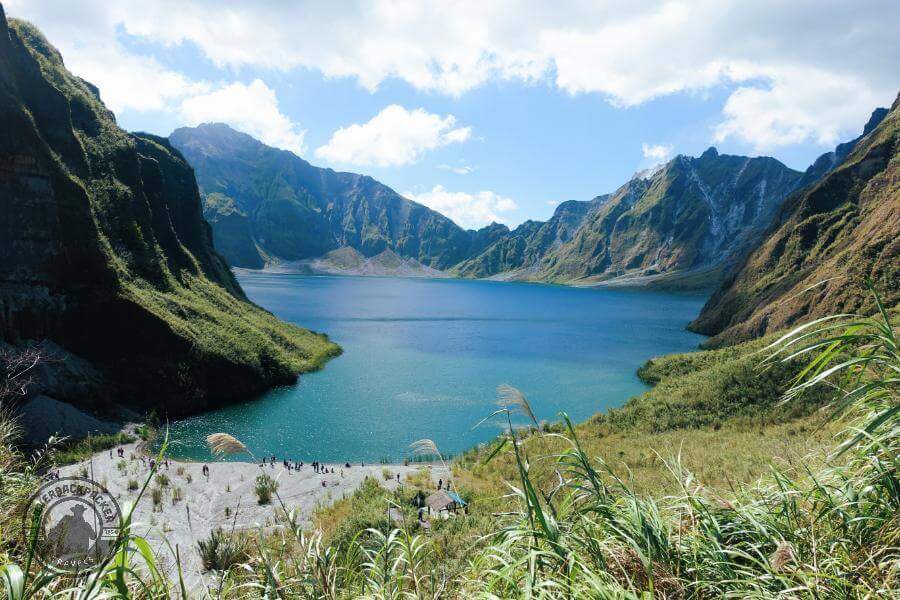
Mount Pinatubo – Zambales, Pampanga, and Tarlac
Mount Pinatubo gained global attention following its 1991 eruption, one of the most powerful eruptions of the 20th century. Today, Pinatubo has transformed from a site of devastation into a breathtaking crater lake destination. The turquoise-coloured lake that now fills the caldera is a stunning sight against the backdrop of Pinatubo’s grey slopes, making it a popular spot for photography.
Adventurers can embark on a 4×4 off-road journey across the lahar-filled landscape before hiking to the crater’s edge. The landscape surrounding the lake is otherworldly, with remnants of volcanic ash, strange rock formations, and riverbeds. It’s a stark but beautiful reminder of nature’s power to both destroy and rejuvenate.
Best Time to Visit: The dry season from November to February, when trails are less muddy and views are clearest.
Mount Pinatubo in Numbers
Volcano Number – 273083
Last Known Eruption – June 15, 1991
Elevation – 1486m
Coordinates – 15°08′30″N 120°21′00″E / 15.14167°N 120.35000°E
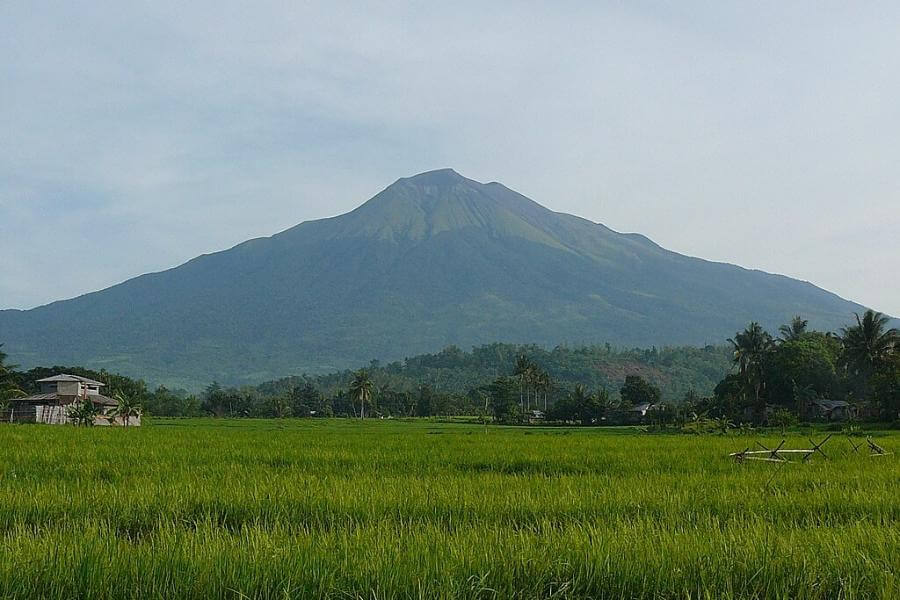
Kanlaon Volcano – Negros Island
Towering over Negros Island, Kanlaon is the highest peak in the Visayas at 2,435 metres. This active volcano is part of a natural park and boasts lush forests, endemic wildlife, and impressive landscapes. Kanlaon is a favourite among hikers for its challenging yet rewarding trails, offering views over the island’s landscapes, neighbouring Cebu, and even as far as Panay Island on clear days.
While the trek to the summit is strenuous, adventurers are rewarded with panoramic views and the chance to witness the active crater up close. Mount Kanlaon is sacred to the locals, who hold various cultural beliefs about its power and significance, adding a spiritual dimension to the journey.
Best Time to Visit: During the dry season (November to April), as the trails are typically less slippery and safer for climbing.
Image – Studphil, Public domain, via Wikimedia Commons
Kanlaon Volcano in Numbers
Volcano Number – 272020
Last Known Eruption – June 3, 2024
Elevation – 2465m
Coordinates – 10°24′40″N 123°07′54″E / 10.4111°N 123.1318°E
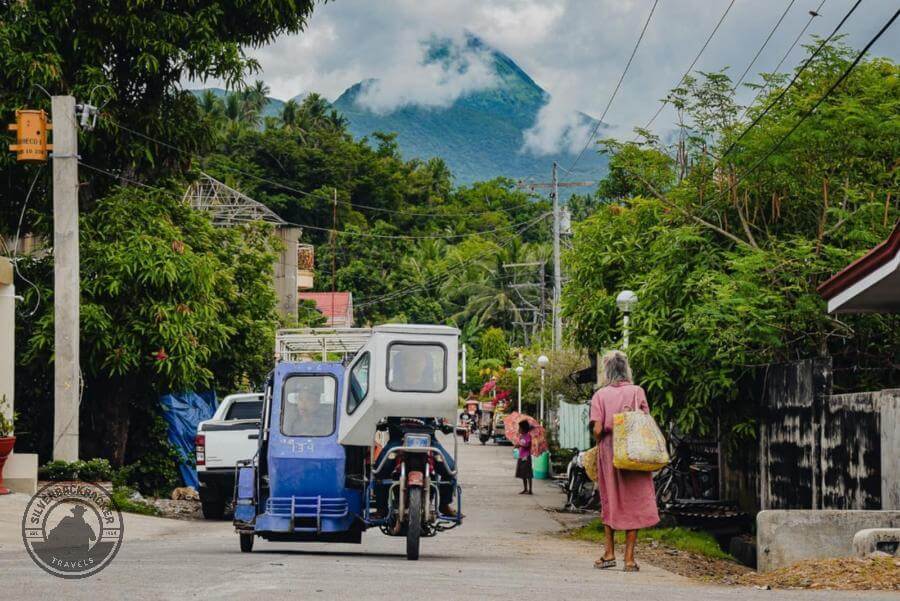
Mount Bulusan – Sorsogon, Bicol Region
Another prominent volcanic site in the Bicol Region, Mount Bulusan offers visitors an incredible range of experiences with its lush forests, lakes, and diverse wildlife. Though Mount Bulusan is an active stratovolcano, it is enveloped by Bulusan Volcano Natural Park, a protected area that makes it an ecotourism paradise. Within the park, Lake Bulusan lies at the foot of the mountain, surrounded by thick forests and often shrouded in mist, creating a dramatic and moody atmosphere.
Visitors can enjoy kayaking on the lake, hiking through the forest trails, or exploring nearby hot springs. The variety of flora and fauna makes Bulusan Volcano an ideal spot for nature enthusiasts, while the presence of the active volcano adds an element of thrill.
Best Time to Visit: From December to April, as the trails and weather conditions are most accommodating during this period.
Mount Bulusan in Numbers
Volcano Number – 273010
Last Known Eruption – June 12, 2022
Elevation – 1565m
Coordinates – 12°46′12″N 124°03′00″E / 12.77000°N 124.05000°E
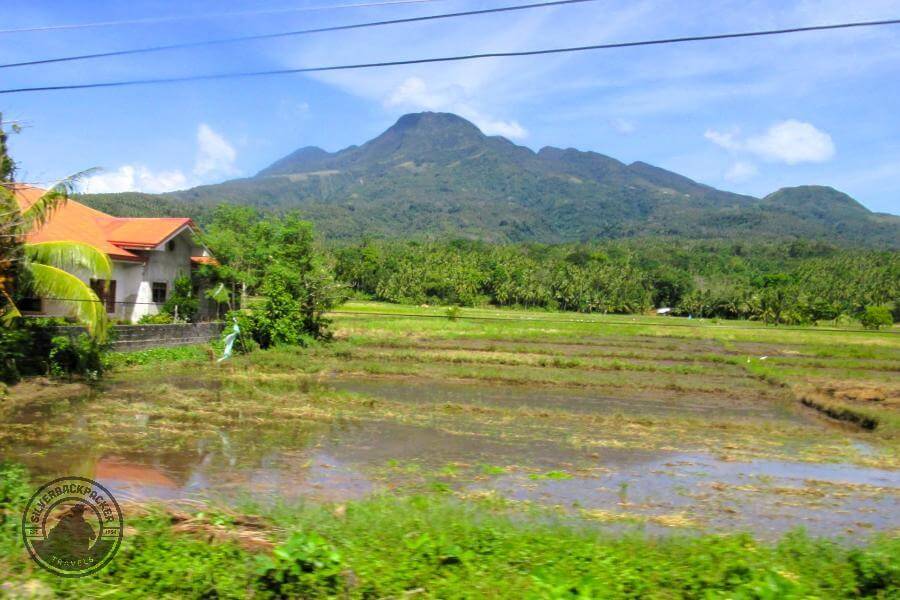
Mount Hibok-Hibok – Camiguin Island
On the scenic island of Camiguin, Mount Hibok-Hibok is an active volcano and the tallest point on the island, offering a challenging yet scenic trek to its summit. Known for its rugged beauty, Hibok-Hibok boasts volcanic craters, dense forests, and breathtaking coastal views of Camiguin. The climb is physically demanding, but those who reach the top are rewarded with sweeping vistas of the island’s coastline, the Bohol Sea, and neighbouring islands.
The local authorities in Camiguin have maintained strict guidelines for trekkers, making sure that safety and environmental conservation are prioritised. Along the trails, climbers can witness hot springs and fumaroles, reminders of the volcano’s activity.
Best Time to Visit: January to March, when the weather is cooler and ideal for hiking.
Mount Hibok – Hibok in Numbers
Volcano Number – 271080
Last Known Eruption – July 1953
Elevation – 1332m
Coordinates – 9°12′02″N 124°40′05″E / 9.20056°N 124.66806°E
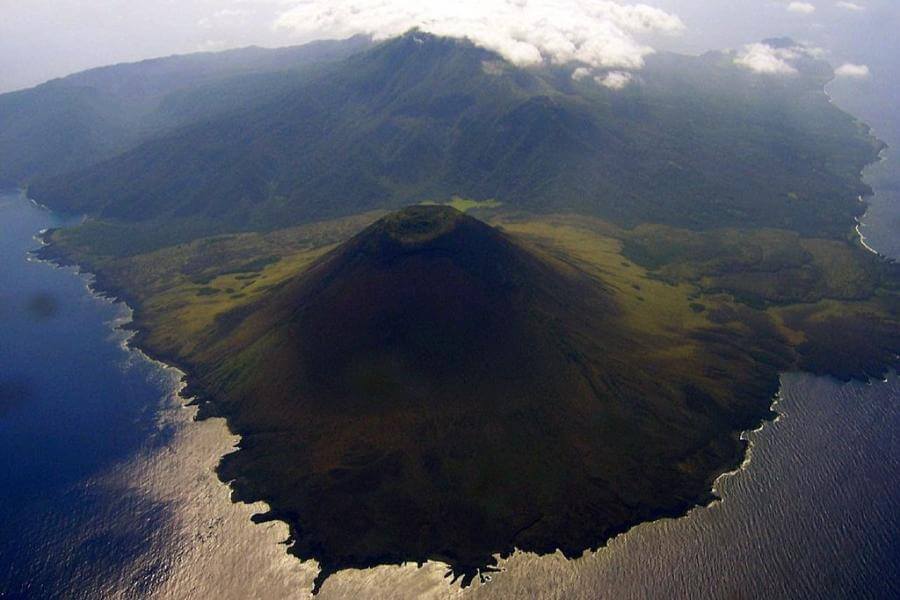
Smith Volcano (Mount Babuyan) – Babuyan Island, Cagayan
For adventurers looking to explore the remote corners of the Philippines, Smith Volcano on Babuyan Island offers an off-the-beaten-path experience. This volcano is located on Babuyan Island in the Babuyan Group of Islands, north of Luzon. Smith Volcano is lesser-known due to its remote location, which requires a boat journey from Cagayan province.
With its solitary cone and rugged surroundings, the volcano offers a truly raw and unspoiled setting. Babuyan Island is also a fantastic spot for whale and dolphin watching, as it lies within the migratory path of several species. Smith Volcano is best for those who seek isolation, natural beauty, and an authentic sense of adventure far from the usual tourist crowds.
Best Time to Visit: From March to May, when seas are calmer and more navigable for boat trips.
Image – Bing Ramos, CC BY 2.0, via Wikimedia Commons
Smith Volcano (Mount Babuyan) in Numbers
Volcano Number – 274030
Last Known Eruption – 1924
Elevation – 688m
Coordinates – 19°32′11.84″N 121°54′46.24″E
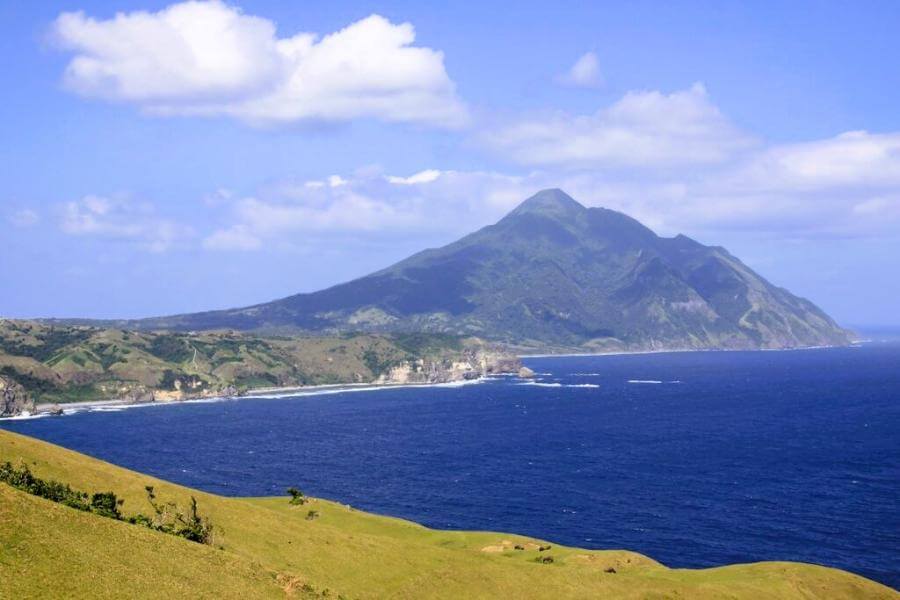
Iraya Volcano – Batanes
Iraya Volcano is located on Batan Island, the largest island in Batanes, the northernmost province of the Philippines. At 1,009 metres, Iraya is a dormant volcano, offering a challenging climb with rewarding views of Batanes’ distinctively rugged terrain, rolling hills, and the Pacific Ocean.
For visitors who prefer not to climb, Iraya is still an impressive sight, especially against the famously dramatic weather of Batanes. The surrounding area is rich in biodiversity, with endemic bird species, native plants, and scenic grasslands. Iraya serves as a focal point for the Ivatan people, the indigenous population of Batanes, whose resilient culture and traditional stone houses reflect the harsh yet beautiful environment.
Best Time to Visit: March to June, when typhoon activity is low and the weather is ideal for exploring the outdoors.
Image – IntrepidWandererCom, CC BY 3.0, via Wikimedia Commons
Iraya Volcano in Numbers
Volcano Number – 274060
Last Known Eruption – 1454
Elevation – 1009m
Coordinates – 20°27′59″N 122°00′42″E / 20.46639°N 122.01167°E
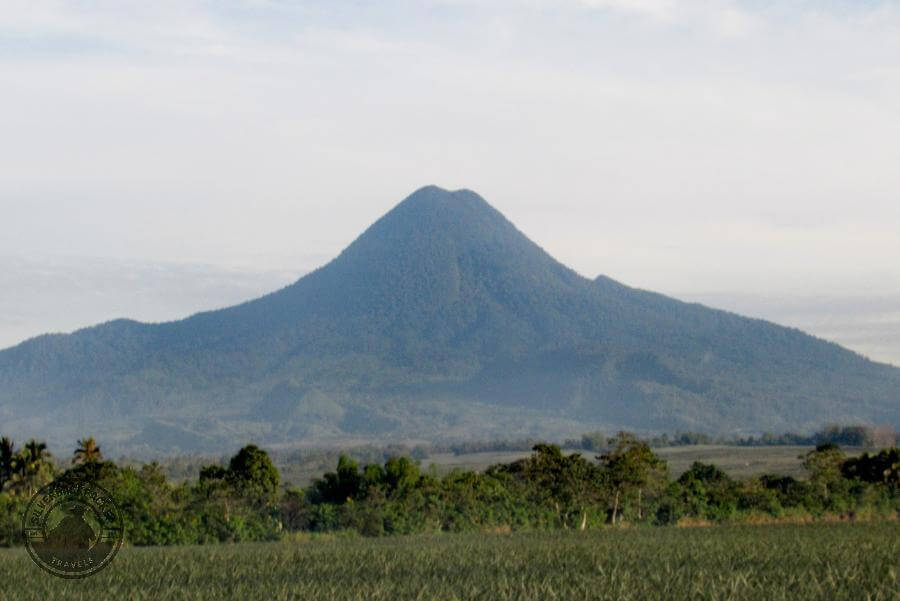
Mount Matutum, South Cotabato
Mount Matutum, located in South Cotabato, Philippines, is an active stratovolcano and a prime destination for nature lovers and trekkers. Rising to an elevation of 2,286 metres, it offers breathtaking views and rich biodiversity, including endemic plant species and wildlife.
The trek to the summit is challenging yet rewarding, as it takes adventurers through lush forests, moss-covered trees, and, on clear days, panoramic views of nearby mountain ranges.
To preserve the environment, visitors must secure a permit from the Matutum Protected Landscape office and adhere to regulations that protect the mountain’s ecosystem. With its scenic beauty and ecological significance, Mount Matutum is a must-visit for those seeking adventure in Mindanao.
Best Time to Visit: December to April, when the dry season reduces the likelihood of rain, making trails more accessible and enhancing visibility.
Mt.Matutum in Numbers
Volcano Number – 271020
Last Known Eruption – 1911
Elevation – 2286m
Coordinates – 6°26′00″N 125°06′30″E / 6.43333°N 125.10833°E
Have you been to any of the many volcanoes in the Philippines??
Let us know your favourite ones and the adventures you had while there in the comments below.

Essential Travel Guides
The Best
Volcano Tourist Destinations
in the Philippines
Check Out These Related Posts
List of active volcanoes in the Philippines
If you enjoyed reading “The Best Volcano Tourist Destinations in the Philippines” then please share this page with your friends.
Leave a comment below to let me know what you liked best.
Follow Silverbackpacker on Facebook, Instagram ,Twitter and Pinterest for more travel adventures and be notified about my latest posts and updates!
Thankyou for sharing 🙂
Please Note – All blog post photos on Silverbackbacker.com are of a lower quality to enable faster loading and save you data. If you would like to buy or license higher quality copies of any of the photographs you can email us at silverbackpackertravels@gmail.com
All photographs and content on this website remain the property of Silverbackpacker.com. Images may not be downloaded, copied, reproduced or used in any way without prior written consent.
Print purchases entitle the purchaser to the ownership of the image but not to the copyrights of the image which still remain with Silverbackpacker.com even after purchase.
Follow Silverbackpacker for more of his Travels
Facebook @silverbackpacker | Instagram @silverbackpacker
Twitter @silverbackpaker | Pinterest @silverbackpaker
Audere Est Facere – Silverbackpacker.com – To Dare is To Do
Affiliate Disclaimer: Links on this website may be affiliate links that could result in us receiving compensation when you purchase a product or service from that link. You do not pay any extra fees for these items. This helps us to keep this website going. Thank you for your support.
Disclaimer | Privacy Policy | Cookie Statement © All Rights Reserved

